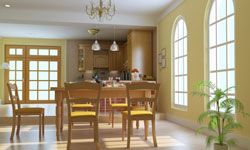Whether you've bought a new house or just need a change, the most dramatic impact you can make -- before buying furniture, knickknacks or appliances -- is in the color of the walls. Color shapes the space, sets the tone and can even change your perception of a room's size. Choosing the right color for a room means balancing its architectural details against the rest of the house and creating a flow throughout the space. So much of our lives take place within the walls of our homes: It's no wonder we take house paint so seriously.
In this article, we'll look at some of the things you should think about before you buy house paint -- the decisions you'll need to make before you even set foot inside a store and begin the fun, exhausting game of comparing paint chips.
Advertisement





